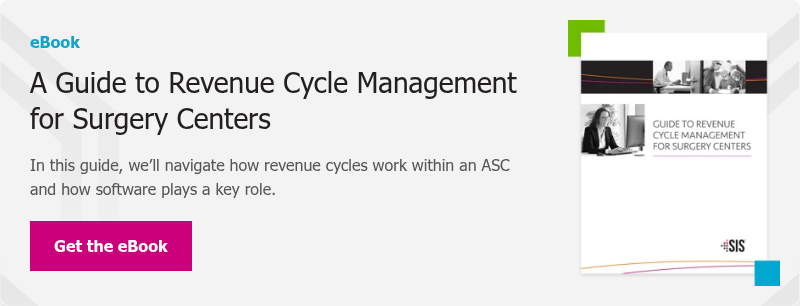In ambulatory surgery centers, obtaining prompt payment from insurers and patients is vital to effective operations. Unfortunately, it is becoming harder to get paid everything you are owed given today’s reimbursement environment.
Simply stated, revenue cycle management is following each and every claim to full payment. There are many areas along the way that create low pays and/or no pays. According to researchers, as much as fifteen cents of every US dollar spent on healthcare goes towards revenue cycle inefficiencies. That translates to the country, as a whole, spending approximately $400 billion annually on claims processing, billing, payments, et cetera, because of a lack of revenue cycle management.
Healthcare technology has evolved in recent years, giving ASC administrators the tools to leverage analytics and create revenue cycle solutions. These solutions enable their organizations to monitor processes, increase operational efficiencies, and improve net revenue.
To begin, consider the following four key areas that make a measurable impact on revenue cycle management:
1. Case Costing
Understanding the cost to perform a case has historically been difficult to obtain. Revenue cycle technology gives you the ability to break down costs. The result is better communication with physicians providing the care to patients as well as negotiations with supply vendors. Case costing data also improves payor contract negotiations.
2. Payor Mix
While shifts in payor mix are difficult to manage, it is important to monitor them because they directly impact the bottom line. Utilization of revenue cycle technology provides administrators with a view of the impact, allowing them to evaluate financial ramifications. Payor mix data serves as a predictor of a center’s stability and provides a road map for contract negotiation priorities.
3. Contracts
Contracts are often outdated and neglected. All too often they are allowed to "evergreen" or just roll over into the next year without changes. Revenue cycle technology manages the many payment variables inside each contract. These variables are inclusive, but not limited to: case rates, carve outs, percentage of billed charges, and number of lines paid. Updated contracts and systematic case audits create opportunities for centers to obtain full reimbursement.
4. Workflow Automation
Workflow automation takes a center to a whole new operating level. Revenue cycle technology systematically verifies payment accuracy and brings transparency to the business office. Manual auditing methods have become things of the past as centers strive to collect all of the money earned.
By addressing these four key areas, outpatient healthcare providers, such as ambulatory surgery centers and rehabilitation clinics, are able to improve their revenue cycle management, obtain prompt payments from insurers and patients, and mitigate the negative financial impact of unpaid claims on net revenue.




























